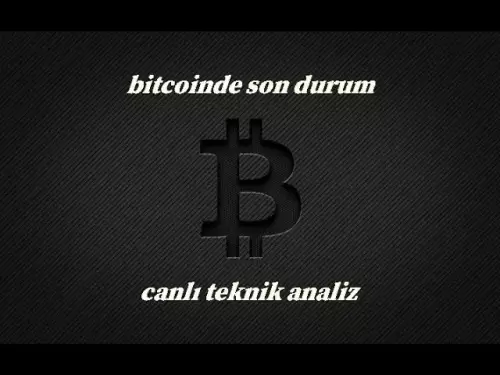-
 Bitcoin
Bitcoin $117,909.7654
0.19% -
 Ethereum
Ethereum $2,959.0750
0.16% -
 XRP
XRP $2.7837
-0.29% -
 Tether USDt
Tether USDt $1.0002
-0.01% -
 BNB
BNB $688.6700
-0.46% -
 Solana
Solana $162.0212
-0.60% -
 USDC
USDC $0.9999
0.00% -
 Dogecoin
Dogecoin $0.1986
-1.86% -
 TRON
TRON $0.3013
-0.72% -
 Cardano
Cardano $0.7267
0.75% -
 Hyperliquid
Hyperliquid $47.7796
3.33% -
 Stellar
Stellar $0.4384
14.09% -
 Sui
Sui $3.4246
0.55% -
 Chainlink
Chainlink $15.2028
-0.09% -
 Bitcoin Cash
Bitcoin Cash $507.0546
-2.02% -
 Hedera
Hedera $0.2123
7.77% -
 Avalanche
Avalanche $21.0986
1.80% -
 UNUS SED LEO
UNUS SED LEO $9.0758
-0.01% -
 Shiba Inu
Shiba Inu $0.0...01323
-0.16% -
 Toncoin
Toncoin $3.0025
0.66% -
 Litecoin
Litecoin $94.1887
0.96% -
 Polkadot
Polkadot $3.9479
-0.03% -
 Monero
Monero $334.6755
0.94% -
 Dai
Dai $0.9999
0.00% -
 Uniswap
Uniswap $8.4746
-0.81% -
 Ethena USDe
Ethena USDe $1.0006
-0.02% -
 Pepe
Pepe $0.0...01236
0.49% -
 Bitget Token
Bitget Token $4.3803
-0.28% -
 Aave
Aave $302.0114
0.90% -
 Bittensor
Bittensor $389.5186
-0.84%
How to use Fibonacci levels in Bitcoin contract trading?
Fibonacci levels help Bitcoin traders identify key support, resistance, and profit targets by analyzing price retracements and extensions within trends.
Jul 13, 2025 at 08:07 am

Understanding Fibonacci Levels in Trading
Fibonacci levels are a technical analysis tool used by traders to identify potential support and resistance zones. These levels are derived from the Fibonacci sequence, a mathematical concept where each number is the sum of the two preceding ones (0, 1, 1, 2, 3, 5, 8, 13, etc.). In trading, key Fibonacci ratios such as 23.6%, 38.2%, 50%, 61.8%, and 78.6% are commonly applied to price charts. When analyzing Bitcoin contract trading, these levels help traders anticipate possible reversal points during trends.
Traders often use Fibonacci retracement tools to draw horizontal lines that indicate areas of interest based on previous price swings. The idea is that after a significant price movement up or down, the price may retrace to one of these key Fibonacci levels before continuing in the original direction. This can be particularly useful when dealing with Bitcoin futures contracts, which are highly volatile and influenced by both macroeconomic factors and market sentiment.
Applying Fibonacci Retracements to Bitcoin Charts
To begin applying Fibonacci levels in Bitcoin contract trading, it's essential to first identify a clear swing high and swing low on the chart. For example, if Bitcoin rises from $30,000 to $40,000, this forms the basis for drawing Fibonacci retracement levels. Using your trading platform’s built-in Fibonacci tool, you can click on the swing low and drag it to the swing high. The tool will then automatically plot the key retracement levels between those two points.
In crypto derivatives markets, where leverage plays a crucial role, accurately identifying these levels helps determine entry and exit points. If the price begins to retrace from $40,000, watching how it reacts at 38.2% ($36,180) or 61.8% ($33,820) becomes critical. Traders might look for candlestick patterns or volume spikes around these levels to confirm potential reversals or continuations.
- Ensure the trend is clearly defined before applying Fibonacci levels.
- Use multiple timeframes to validate potential support/resistance areas.
- Combine Fibonacci levels with other indicators like moving averages or RSI for better accuracy.
Combining Fibonacci Levels with Trendlines and Channels
While Fibonacci retracements alone offer valuable insights, they become even more powerful when combined with trendlines and channels in Bitcoin contract trading. A strong uptrend or downtrend can provide context for whether a retracement is likely to hold or break. Drawing trendlines along recent highs and lows helps identify the overall market structure.
For instance, in an upward trending market, if Bitcoin pulls back to the 61.8% Fibonacci level and also aligns with a rising trendline, it increases the probability that the price will find support there. Conversely, if the same level coincides with a descending channel resistance, it could signal a stronger area of resistance.
- Identify major trend directions using higher timeframes.
- Overlay Fibonacci levels onto well-defined trend channels.
- Look for confluence between Fibonacci levels and trendlines to increase trade validity.
This combination allows traders to filter out false signals and focus on high-probability setups within the broader trend. It also enhances decision-making when placing stop-loss and take-profit orders in leveraged trades.
Using Fibonacci Extensions for Profit Targets
Beyond retracement levels, Fibonacci extensions play a crucial role in setting profit targets in Bitcoin contract trading. Extensions go beyond the initial swing and include levels like 127.2%, 161.8%, and 261.8%. These levels help traders estimate how far the price might move once the retracement ends and the trend resumes.
When trading Bitcoin futures, understanding where the price could potentially reach after breaking past a prior swing high or low is invaluable. For example, if Bitcoin breaks above a previous resistance level at $40,000 and continues upward, projecting a 161.8% extension of the prior move can give a realistic profit-taking zone.
- Measure the distance of the initial impulse wave.
- Apply Fibonacci extensions from the retracement point.
- Set take-profit orders near key extension levels.
Using Fibonacci extensions not only helps in managing profits but also improves risk-reward ratios when entering trades. It complements the retracement strategy by offering a roadmap for where the price might head next.
Risk Management Around Fibonacci Zones
Even though Fibonacci levels offer structured trading opportunities, risk management remains paramount in Bitcoin contract trading due to its volatility. Traders should never rely solely on Fibonacci levels without considering broader market conditions and implementing proper risk controls.
A practical approach involves placing stop-loss orders just beyond Fibonacci levels to avoid being stopped out prematurely by minor price fluctuations. For example, if entering a long position at the 61.8% retracement level, placing a stop below the 78.6% level provides a buffer while limiting downside risk.
- Always define your maximum acceptable loss per trade.
- Adjust stop-loss placement based on volatility and timeframe.
- Consider reducing position size when trading near uncertain Fibonacci zones.
By combining Fibonacci strategies with disciplined risk practices, traders can navigate Bitcoin futures with greater confidence, especially during periods of heightened market uncertainty.
Frequently Asked Questions
What timeframes work best with Fibonacci levels in Bitcoin futures?
Fibonacci levels can be applied across all timeframes, but many traders prefer using them on higher timeframes like 4-hour, daily, or weekly charts for more reliable signals. Shorter timeframes tend to generate more noise, increasing the likelihood of false breakouts.
Can Fibonacci levels be used in ranging markets?
Yes, although Fibonacci retracements are most effective in trending markets, they can still be applied in ranging environments. In such cases, traders often combine them with horizontal support and resistance levels to improve accuracy.
How do I know if a Fibonacci level is valid or not?
A valid Fibonacci level typically shows repeated price reactions, such as bounces, rejections, or consolidation. Volume analysis and candlestick confirmation can further validate whether a level has significance.
Is it necessary to use other indicators alongside Fibonacci levels?
While Fibonacci levels can be used independently, combining them with other tools like volume indicators, moving averages, or oscillators enhances their effectiveness. Confluence between different analytical methods increases the probability of successful trades.
Disclaimer:info@kdj.com
The information provided is not trading advice. kdj.com does not assume any responsibility for any investments made based on the information provided in this article. Cryptocurrencies are highly volatile and it is highly recommended that you invest with caution after thorough research!
If you believe that the content used on this website infringes your copyright, please contact us immediately (info@kdj.com) and we will delete it promptly.
- Bitcoin Rally, Satoshi Nakamoto, and the Richest Elite: A New World Order?
- 2025-07-13 12:30:12
- Mining, BDAG, LTC Outlook: What's Hot and What's Not?
- 2025-07-13 12:30:12
- Web3 Gaming: Explosive Growth Forecast to 2032 – But Can It Overcome the Hurdles?
- 2025-07-13 12:50:11
- XRP Price, Wallet Growth, and Whale Bets: Decoding the Momentum
- 2025-07-13 12:50:11
- Arctic Pablo Coin: Is This Presale the Next High ROI Meme Coin?
- 2025-07-13 12:55:12
- Bitcoin Price, Leveraged Futures, and Traders Increase: A NY Perspective
- 2025-07-13 12:55:12
Related knowledge

Psychology of trading Bitcoin contracts
Jul 13,2025 at 02:50am
Understanding the Emotional Rollercoaster of Bitcoin Futures TradingBitcoin contract trading, especially in the form of futures, introduces a high lev...

Best time of day to trade Bitcoin contracts?
Jul 13,2025 at 05:29am
Understanding Bitcoin Contracts and Their VolatilityBitcoin contracts, particularly futures contracts, are derivative instruments that allow traders t...

How to use Fibonacci levels in Bitcoin contract trading?
Jul 13,2025 at 08:07am
Understanding Fibonacci Levels in TradingFibonacci levels are a technical analysis tool used by traders to identify potential support and resistance z...

Understanding the Bitcoin futures term structure
Jul 13,2025 at 08:28am
What is Bitcoin Futures Term Structure?The Bitcoin futures term structure refers to the relationship between the prices of Bitcoin futures contracts w...

What are the trading hours for Bitcoin futures?
Jul 13,2025 at 12:14pm
Understanding Bitcoin Futures Trading HoursBitcoin futures are derivative contracts that allow traders to speculate on the future price of Bitcoin wit...

How to withdraw profits from a futures account?
Jul 13,2025 at 07:07am
Understanding Futures Accounts and Withdrawal MechanicsIn the cryptocurrency space, a futures account is used to trade contracts that derive their val...

Psychology of trading Bitcoin contracts
Jul 13,2025 at 02:50am
Understanding the Emotional Rollercoaster of Bitcoin Futures TradingBitcoin contract trading, especially in the form of futures, introduces a high lev...

Best time of day to trade Bitcoin contracts?
Jul 13,2025 at 05:29am
Understanding Bitcoin Contracts and Their VolatilityBitcoin contracts, particularly futures contracts, are derivative instruments that allow traders t...

How to use Fibonacci levels in Bitcoin contract trading?
Jul 13,2025 at 08:07am
Understanding Fibonacci Levels in TradingFibonacci levels are a technical analysis tool used by traders to identify potential support and resistance z...

Understanding the Bitcoin futures term structure
Jul 13,2025 at 08:28am
What is Bitcoin Futures Term Structure?The Bitcoin futures term structure refers to the relationship between the prices of Bitcoin futures contracts w...

What are the trading hours for Bitcoin futures?
Jul 13,2025 at 12:14pm
Understanding Bitcoin Futures Trading HoursBitcoin futures are derivative contracts that allow traders to speculate on the future price of Bitcoin wit...

How to withdraw profits from a futures account?
Jul 13,2025 at 07:07am
Understanding Futures Accounts and Withdrawal MechanicsIn the cryptocurrency space, a futures account is used to trade contracts that derive their val...
See all articles

























































































